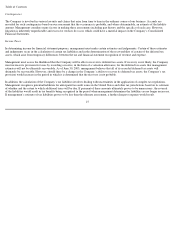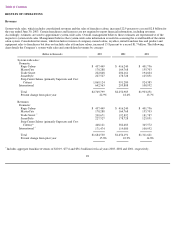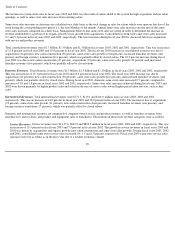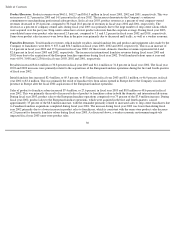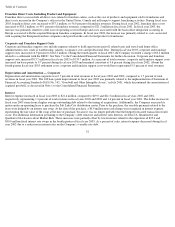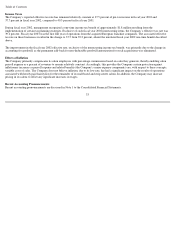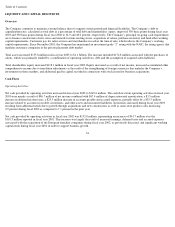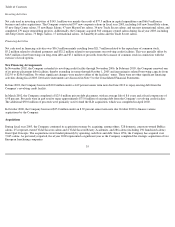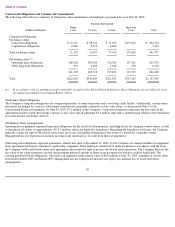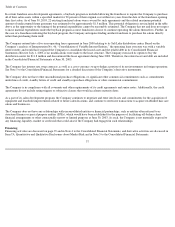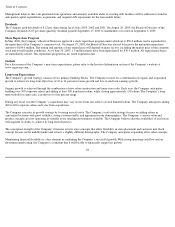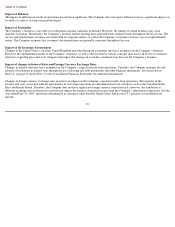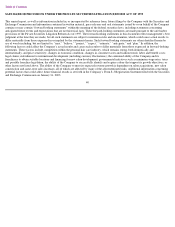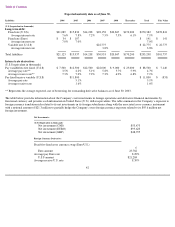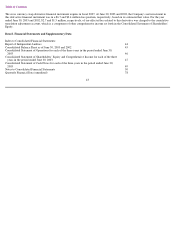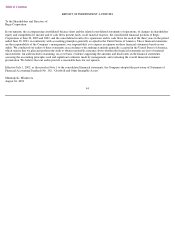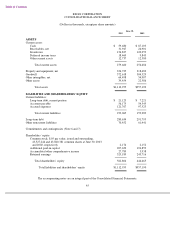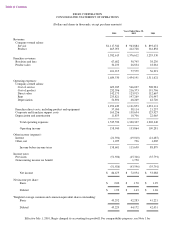Supercuts 2003 Annual Report Download - page 39
Download and view the complete annual report
Please find page 39 of the 2003 Supercuts annual report below. You can navigate through the pages in the report by either clicking on the pages listed below, or by using the keyword search tool below to find specific information within the annual report.
Table of Contents
Contractual Obligations and Commercial Commitments
The following table reflects a summary of obligations and commitments outstanding by payment date as of June 30, 2003:
On-Balance Sheet Obligations
The Company’s long-term obligations are composed primarily of senior term notes and a revolving credit facility. Additionally, certain senior
term notes are hedged by contracts with financial institutions commonly referred to as fair value swaps, as discussed in Note 5 to the
Consolidated Financial Statements. At June 30, 2003, $7.1 million of the Company’s long-term obligations represents the fair value of the
adjustments made to mark these hedge contracts to fair value and an additional $1.4 million represents a deferred gain related to the termination
of certain interest rate hedge contracts.
Off-Balance Sheet Arrangements
Operating leases primarily represent long-term obligations for the rental of salon premises, including leases for company-
owned salons, as well
as franchisee sub-leases of approximately $118.2 million, which are funded by franchisees. Regarding the franchisee sub-leases, the Company
generally retains the right to the related salon assets net of any outstanding obligations in the event of a default by a franchise owner.
Management has not experienced and does not expect any material loss to result from these arrangements.
Other long-term obligations represent guarantees, entered into prior to December 31, 2002, by the Company on a limited number of equipment
lease agreements between its franchisees and leasing companies. If the franchisee should fail to make payments in accordance with the lease,
the Company will be held liable under such agreements and retains the right to possess the related salon operations. The Company believes the
fair value of the salon operations exceeds the maximum potential amount of future lease payments for which it could be held liable. The
existing guaranteed lease obligations, which have an aggregate undiscounted value of $6.6 million at June 30, 2003, terminate at various dates
between December 2003 and March 2009. Management has not experienced and does not expect any material loss to result from these
arrangements.
36
Payments due by period
Within
More than
(Dollars in thousands) 1 year 1-3 years 3-5 years 5 years Total
Contractual Obligations
On
-
balance sheet:
Long
-
term obligations
$
19,115
$
28,122
$
71,653
$
175,624
$
294,514
Capital lease obligations
2,008
2,975
2,260
7,243
Total on
-
balance sheet
21,123
31,097
73,913
175,624
301,757
Off-balance sheet
(a) :
Operating lease obligations
200,582
305,429
176,324
137,241
819,576
Other long
-
term obligations
923
4,283
1,148
278
6,632
201,505
309,712
177,472
137,519
826,208
Total
$
222,628
$
340,809
$
251,385
$
313,143
$
1,127,965
(a)
In accordance with accounting principles generally accepted in the United States of America, these obligations are not reflected in the
accompanying audited Consolidated Balance Sheet.



